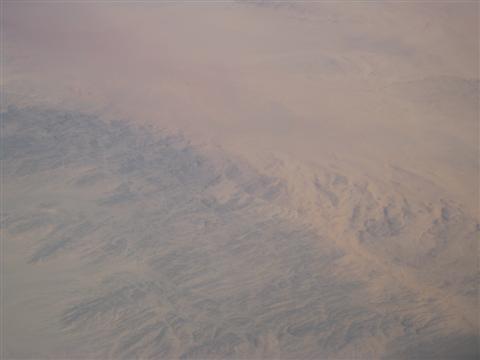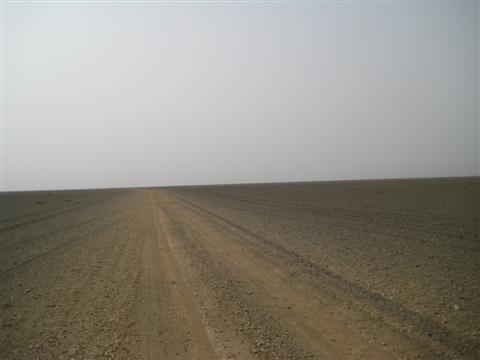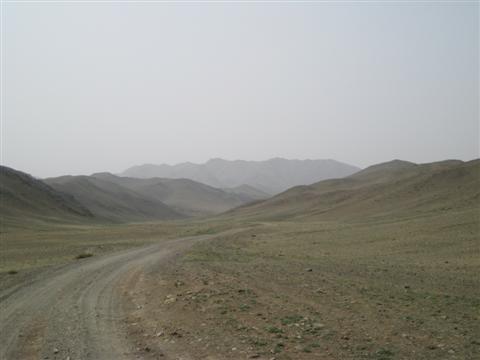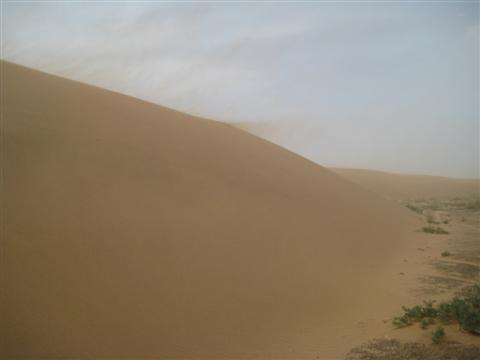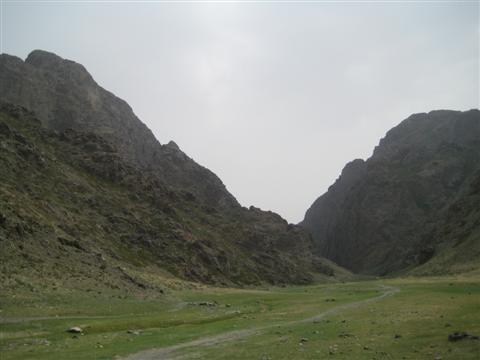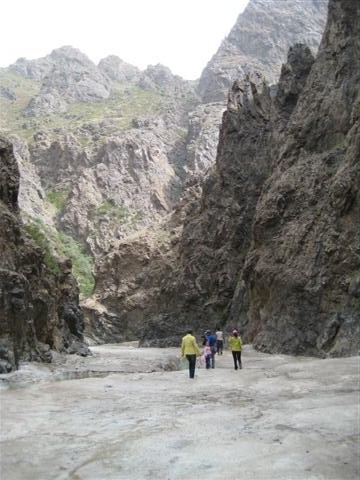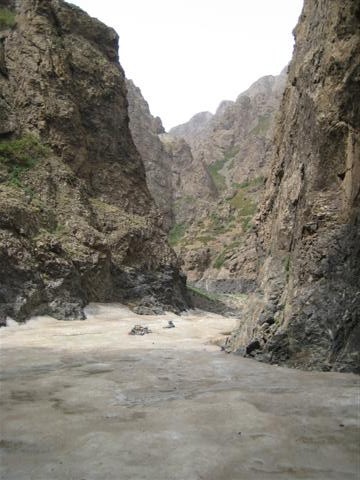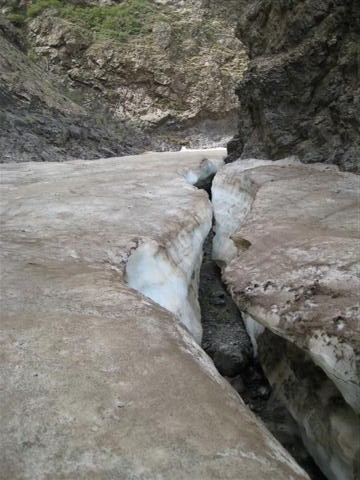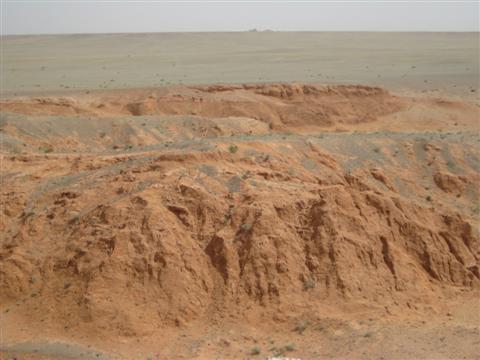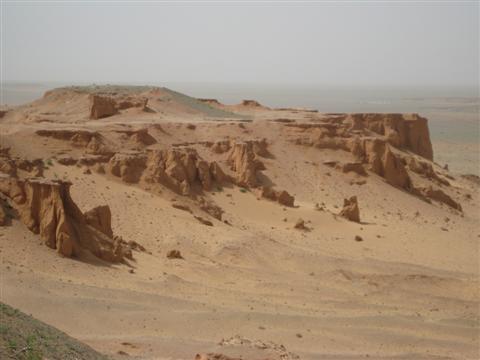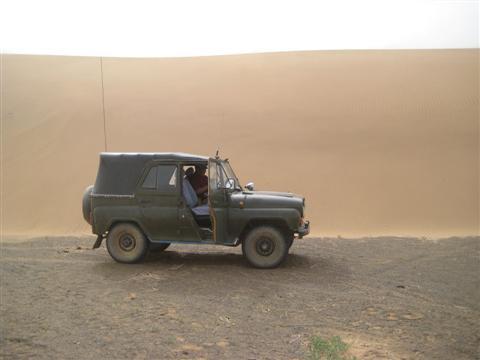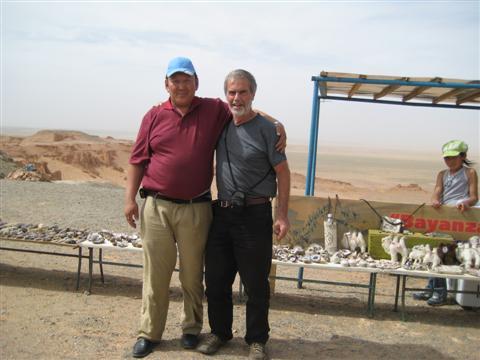Deserts are never as barren as the image the word initially conjures up before your eyes.
The Sahara has its magnificent emerald oases across a vast swathe of northern and western Africa. The Atacama in northern Chile has its snow-capped volcanoes, steaming geysers and age-old villages. And the Gobi in Mongolia has a ravine with almost year-round ice, which makes sense when it's minus 40 degrees Fahrenheit in winter but not when the mercury soars to more than 100 degrees in summer.
The Gobi Desert from the air
Getting into the Gobi, at 500,000 square miles Asia's largest desert, covering a third of Mongolia and parts of China, is not nearly as difficult as I imagined -- just an hour and a half's flight or a 14-hour bus journey from Ulaanbaatar, Mongolia's capital, to Dalazangad, gateway to some of the more interesting sections.
That's assuming, of course, that you've managed to make it in the first place into Ulaanbatar airport, where wind streams sometimes cause havoc with landings and take-offs.
I don't know who's in charge of Ulaanbatar airport's large video on this particular day, but it's showing a lot of naked Caucasian prisoners followed by lesbian love scenes. Notwithstanding, Yours Truly arrives at Dalazangad airport without further orgies, and is met by a driver.
We barely get into his rather worse-for-wear Russian jeep before he points excitedly to his nether regions and triumphantly proclaims "soggy." I assume he's had a urinary accident and almost wet myself in empathy. After a lot more gesturing and triumphant shouting it turns out that his name is something like "Tsooggy."
He keeps on reprising the performance, pointing to my nether regions. At last I cotton on and say "Mike." It's amazing what he can do with that one syllable -- My Ache, My Ech, My Yock, My Ick -- until he gets it almost recognizable. We've bonded in soggy ickiness.
There's no tape deck as I've had on trips elsewhere in Mongolia, so Soggy insists on serenading me himself with heartfelt renderings of great yearning and heroic feats, his huge round face beaming as he lilts away in what sounds suspiciously like My Yiddishe Momme -- I'm having visions of Genghis Khan reincarnated as Genghis Cohen sporting side curls and a Lubavicher's black hat riding across the Gobi desert.
Much of the Gobi is arid pebbly plains and scrub with a slight veneer of green, but there are also wide expanses of yellow and reddish sand, dunes, rocks and a mountain range reaching some 10,000 feet high.
About an hour out of Dalazangad we come to the Vulture's Mouth, Yollin Am in Mongolian, a fantastic canyon with starkly steep and twisting ramparts that has ice several yards thick covering its floor most of the year, right in the middle of the searing desert. Its huge walls keep it sufficiently sun-free and cool after the winter freeze.
Once it had ice the whole year round despite summer daytime temperatures that average 104 degrees Fahrenheit, but climate change has had its impact here, too, and the ice sometimes melts by summer's end. Today, though, it's mid-June and a good part of the ice floor is still intact.
Yours Truly walks gingerly along the slippery surface, sliding, slipping and dodging the six-foot holes that lie in wait as the canyon narrows to arms' width, until an ominous crunch under foot suggests it might be better to beat a retreat rather than experience a major "oops" moment.
Oops
Back in Soggy's jeep it's about an hour or two across the arid plain to one of the most famous sites in paleontology, the Flaming Cliffs, the bright orange escarpments where American naturalist and explorer Roy Chapman Andrews unearthed major dinosaur fossil finds in the 1920s, including the first dinosaur eggs.
Andrews had open sesame-'d a veritable paleontologists' Aladdin's cave, offering up a seemingly endless flow of fossils, including a sheep-sized protoceratops and a velociraptor locked in mortal combat with the claws of one embedded in the belly of the other, which in turn has its jaws locked on its enemy's limb.
They and the other dinosaurs were probably overwhelmed by category five sand hurricanes that raged over the area 85 millions years ago -- at least, that's what Soggy says.
Andrews, who gave the area its name for the cliff's bright orange color that morphs into flaming red in the rays of the setting sun, is himself regarded as the prototype for that great archaeologist-adventurer of the silver screen, Indiana Jones.
However great a paleontologist he may have been, he was less expert as an ovologist, if that's what an egg freak is called. By misidentifying some fossilized eggs he found beneath the remains of a hitherto unknown dinosaur, he forever christened the new creature an egg thief, or oviraptor, assuming the eggs belonged to a frill-faced protoceratops and the beaked oviraptor had pinched 'em.
Later paleontologists decided the eggs were in fact the oviraptor's own, acquitting it of all charges of thieving and giving Andrews egg all over his face. Notwithstanding, the oviraptor's name has stuck in what science writer Bob Strauss calls one of paleontology's major bum raps. Get it, raptor, rap?
Be that as it may, Indiana Soggy and Indiana My-Ick now drive off into the Gobi sunset, past glowing orange sand dunes. Heroic, triumphalist songs echo forth from the mouth of the former, and sagas of adventure run amok through the mind of the latter, overwhelmed by a vision of an advancing horseman with swaying side curls and wide-brimmed black hat -- Ghengis Cohen on the charge of conquest once more.
Nightfall sees Yours Truly reposing in an encampment of gers, the traditional Mongolian tent with felt covering its wooden lattice work and a stove inside burning wood against the desert night cold.
For the return flight the ticket says 0605. I'm sure this cannot be correct since the plane from Ulaanbaatar does not land until 0740. They must mean 0805. "No," says the airport clerk, "it if it says 0605, it is 0605."
So I get up at 3:50 to get to Dalazangad airport in time, only to find a cleaner inside and a rabid-looking dog barking and charging me outside. I manage to get inside and slam the glass door shut just as the dog bounds forward, snarling and baring some vicious looking dinosaur teeth.
Of course, there's no plane. It hasn't arrived yet and is not due out until -- you've guessed it -- 0805.
The next blog will take a look at the Atacama.
